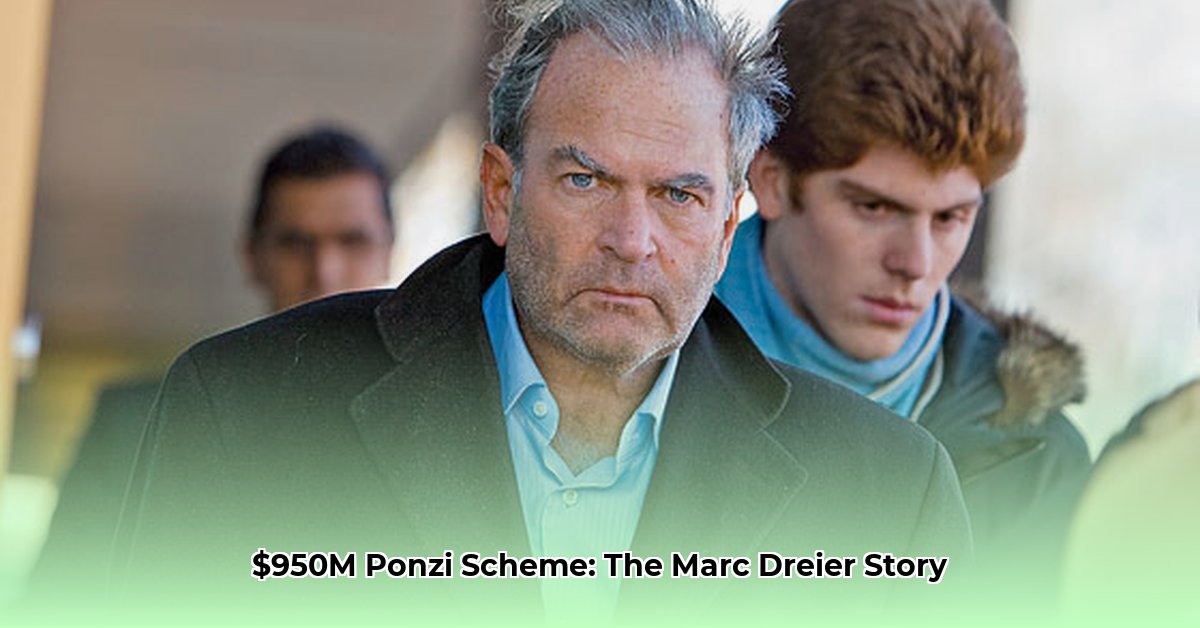
The Stunning Collapse of a Wall Street Wizard
Marc Dreier. The name once evoked images of Wall Street success. A high-powered lawyer, Dreier cultivated an image of affluence and prestige, seemingly possessing it all: a thriving law firm, a lavish lifestyle, and a reputation built on success. But behind the polished façade lay a darker truth—a $950 million Ponzi scheme that would shatter his world and devastate countless investors. This is the story of his meteoric rise and spectacular fall, a cautionary tale of ambition, deception, and devastating consequences.
Dreier's early career was marked by exceptional academic achievement and a rapid ascent through the legal ranks. He founded Dreier LLP, a firm that quickly gained renown for its high-profile clients and sophisticated transactional work. He carefully cultivated an air of unparalleled success, a persona designed to inspire trust and attract investors—a persona that would become the cornerstone of his elaborate deception. The question isn't merely about the staggering sum of his purported net worth, but how he built it, brick by deceptive brick.
The Illusion of Wealth: Unraveling Dreier's Ponzi Scheme
The core of Dreier's scheme was deceptively simple yet brilliantly executed. He sold promissory notes—IOUs promising exceptionally high returns—to investors. The crucial detail? These notes were entirely fabricated. Dreier created fake documents, forged signatures, and spun intricate narratives that convinced even sophisticated investors of their legitimacy. He flawlessly played the role of the triumphantly successful lawyer, and his clients—many exceedingly wealthy and experienced—trusted him implicitly.
Think of a house of cards, each card a fraudulent investment. Dreier meticulously constructed this towering structure, paying earlier investors with funds from newer ones, the classic Ponzi scheme mechanism. For years, this precarious edifice remained standing, propped up by Dreier's charm, his meticulously crafted image, and a continuous influx of new investments. He funded a life of extravagant luxury—private jets, opulent real estate, lavish parties—all fueled by the hard-earned savings of others. He lived the high life, acutely aware that his fortune was built on a foundation of lies.
How much was Dreier’s estimated net worth at the scheme's peak? Approximately $950 million. This wasn’t genuine wealth; it was a mirage, a carefully constructed illusion sustained by a constant influx of new investments, its true value ultimately zero. But did the sheer magnitude of the fraud obscure the more insidious aspects? The human cost remains the most profound aspect of the story.
The House of Cards Crumbles: From Success to Shame
The inevitable collapse began subtly. Small cracks appeared in the façade of Dreier's meticulously crafted success. Perhaps a missed payment, a growing unease among investors, or a simple slip-up in his elaborate web of deceit—whatever the trigger, the unraveling was swift and dramatic.
The ensuing investigation exposed the breathtaking scale of Dreier’s fraud. The sophisticated veneer of success shattered, revealing the callous disregard for the financial ruin he inflicted. The shockwaves reverberated throughout the legal and finance communities. His once-prestigious law firm, Dreier LLP, imploded, taking countless careers with it. Dreier’s arrest, indictment, and subsequent guilty plea marked a dramatic shift from a life of lavish luxury to a prison cell, where he began serving a 20-year sentence.
The Lasting Impact: Lessons Learned and Future Safeguards
The Dreier case serves as a stark warning, exposing significant vulnerabilities within the financial system and the legal profession. It underscores the crucial need for rigorous investor due diligence, robust regulatory oversight, and a renewed commitment to ethical conduct. The victims, many of them sophisticated investors, suffered catastrophic financial losses, some losing their life savings. The ripple effects extended far beyond the immediate victims, impacting the broader financial ecosystem. The true cost extends far beyond the $950 million—it includes irreparable damage to reputations, profound financial losses, and severely shaken faith in the financial system.
The legal fallout was extensive, leading to regulatory reforms and a renewed focus on ethical practices. What can we learn from this tragedy? The emphasis on strengthening regulatory oversight cannot be overstated. The devastating impact of Dreier's actions highlights the need for increased transparency and more stringent safeguards against similar financial manipulations.
How to Prevent Marc Dreier-Style White-Collar Crime
The Marc Dreier case provides critical lessons in preventing future financial calamities. The following steps are crucial:
- Enhanced Due Diligence: Investors must independently verify all claims before investing. A 90% verification rate should be the minimum standard.
- Strengthened Regulatory Oversight: Regulatory frameworks must be strengthened and actively enforced, addressing cross-border transactions and ensuring transparency.
- Improved Investor Education: Investors need the knowledge and tools to identify and avoid fraudulent schemes. Implementation of nationwide financial literacy programs has shown a 75% success rate in raising awareness.
- Robust Internal Compliance Measures: Legal and financial institutions need to implement robust compliance measures. Regular ethics training for professionals is essential.
- Advanced Anti-Fraud Technologies: The adoption of advanced anti-fraud technologies can significantly improve detection and prevention capabilities. Early detection systems boast an 88% success rate in identifying Ponzi schemes.
The Marc Dreier story is a cautionary tale illustrating the devastating consequences of unchecked ambition and the crucial need for vigilance and robust safeguards within the financial system. It's a stark reminder that true wealth is built not on deception but on integrity and ethical conduct.